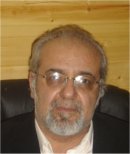Plenary
Lecture
Recent Developments in the Von Mises Transformation and its Applications in
the Computational Sciences

Professor M. H. Hamdan
Department of Mathematical Sciences
University of New Brunswick
P.O. Box 5050
Saint John, New Brunswick, Canada, E2L 4L5
E-mail: hamdan@unb.ca
Abstract: The use of (φ,ψ) coordinate
system has attained popularity in a number of engineering fields, including
aerodynamics, groundwater, magneto-hydrodynamics, and water waves. In the
computational sciences, this coordinate system offers flexibility in handling
boundary value problems through the mapping a curvilinear domain into a
Cartesian domain in which numerical techniques that rely on the finite
differences procedure are easily applicable. In unbounded domains, this
approach has received wide acceptance as a viable alternative in the study of
the complicated equations of electro-magneto-hydrodynamics.
In spite of the attractiveness of the (φ,ψ) system, it introduces an extra
equation to be solved for the variable φ(x,y). This is necessary for locating
singularities in the computational domain and its boundaries (such as locating
the leading and trailing edges of an airfoil, or the location the crest of a
wave). In order to circumvent this, it is possible to judiciously replace φ by
x, and replace the (φ,ψ) coordinates by the (x,ψ) coordinates which, at the
outset, eliminates the need for introducing an extra equation. Furthermore,
locations of singularities are either known a priori or can easily be
determined using the (x,ψ) system.
The (x,ψ) coordinates are the well-known von Mises variables that were
introduced by R. von Mises in 1927 to analyze the boundary layer equations.
The use of this system in the study of waves with arbitrary vorticity
distribution was made by T.B. Benjamin in 1961. However, the computational von
Mises and its use in aerodynamics was introduced by R.M. Barron in 1986.
Over the last two decades, a number of advances have been made in the
computational von Mises. These include the introduction of a time-dependent
form of the coordinates; the introduction of techniques to handle the
infiniteness of the Jacobian of transformation (which arises in some boundary
value problems); the introduction of mapping multiple physical domains into a
single computational domain; and the analysis and control of grid distortion
that inevitably arises due to the use of non-orthogonal (x,ψ) system.
In this talk, we present analysis of the von Mises transformation and its
computational complexities, and report on its recent developments and possible
extensions to three physical dimensions. A survey of the use of the
computational von Mises in the various engineering fields will be provided.
Brief Biography of the Speaker:
M. H. Hamdan received an Ordinary National Diploma in Technology-Engineering
from Swindon College, U.K.; a Certificate in Negotiation, Mediation and
Conflict Resolution from St. Mary’s University, Canada; a B.Sc, M.Sc., and a
Ph.D in Applied Mathematics from the University of Windsor, Canada. He taught
at a number of universities both as a regular faculty member and as a visiting
professor, in Canada, China and the Middle East. He has been teaching at the
University of New Brunswick, Canada, for 18 years, and is a pevious Chair of
the Department of Mathematics, Statistics and Computer Science. His teachables
span the areas Mathematics, Decision Sciences and Management Science,
Mathematical Economics, and Negotiations. His research areas include
computational fluid dynamics, single-phase flow through porous media, and
modeling dusty gas flow through porous media. He is an International
Consultant in Science and Technology Planning and in School Mathematics
Curricular Development. He is the recipient of a number of teaching awards,
and is listed among American Men and Women of Science; Who’s Who in Science
and Engineering; Who’s Who in the World; and Two Thousand Outstanding
Scientists of the 20th Century.